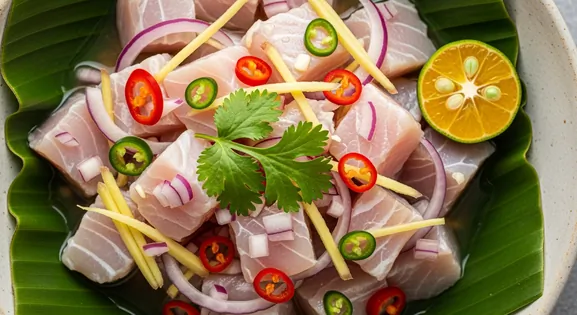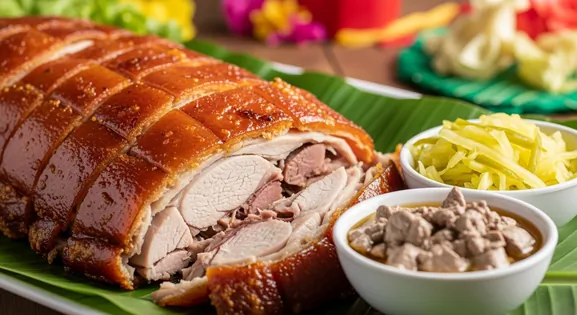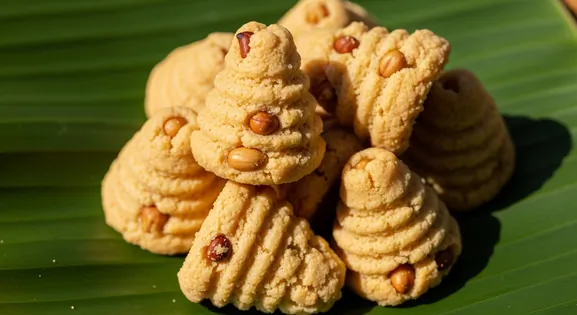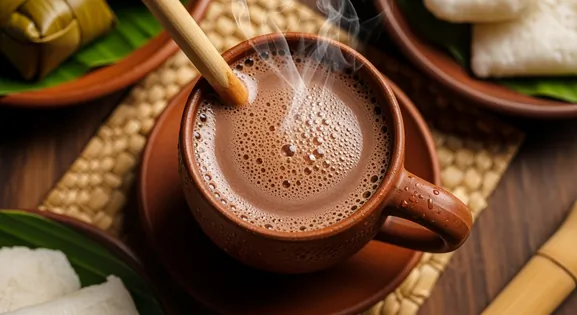Kalamay in Bohol
Kalamay

Kalamay: A Local Culinary Staple
Stepping into Bohol, one quickly encounters Kalamay, the island's beloved sticky rice delicacy. More than just a sweet treat, it's a symbol of Boholano hospitality and tradition. From bustling markets to quaint souvenir shops, finding this iconic pasalubong is an essential part of any culinary journey here.
New to Kalamay? Learn all about its history in our complete guide.
Traditions and Etiquette
Local Significance
Kalamay is more than food in Bohol—it's a cultural symbol and source of pride. The traditional coconut shell packaging with red paper strip is immediately recognized as representing Bohol throughout the Philippines. Local families often have specific recipes passed through generations, and giving Bohol Kalamay as a gift carries special meaning.
Eating Customs
- In traditional Bohol homes, offering Kalamay to visitors is considered a sign of hospitality.
- When eating from the coconut shell, it's customary to scrape the sides clean to enjoy all the caramelized portions.
- Locals often pair it with strong black coffee (kape) to balance the sweetness.
- The empty coconut shells are sometimes repurposed for crafts or as small containers.
Twists on a Classic
Jagna Kalamay
Considered the gold standard of Bohol Kalamay, from the municipality of Jagna. Known for perfect consistency, dark color, and generous latik topping.
Albur Kalamay
From Alburquerque town, typically prepared with a slightly lighter color and sometimes includes peanuts.
Trinidad Kalamay
A distinct variation from Trinidad town, often incorporating additional ingredients like jackfruit or sweet potato.
Premium Boxed Kalamay
Modern gift-ready packaging where traditional coconut shell Kalamay is placed in decorative boxes, popular for special occasion gifts and corporate giveaways.
Pro Tips for an Authentic Experience
Head to Jagna, the "Kalamay Capital," to buy directly from producers. You'll find the freshest, most authentic versions, often at better prices than in tourist centers.
Locals often enjoy Kalamay with a strong cup of Boholano coffee (kape). The bitterness of the coffee perfectly balances the sweetness of the Kalamay, creating a delightful merienda.
Authentic Bohol Kalamay in coconut shells is traditionally sealed with a red paper strip. This isn't just packaging; it's a mark of authenticity and a symbol of good luck.
Exploring Bohol for the Best Kalamay
Tagbilaran City
As Bohol's bustling provincial capital, Tagbilaran is a prime spot to find Kalamay. Its major malls and public markets are well-stocked with various brands, making it convenient for travelers to pick up this iconic pasalubong before departing.
Island City Mall, BQ Mall, Tagbilaran Public Market, Dao Terminal, Tagbilaran Airport
10 AM - 7 PM
Jagna
Often hailed as the true Kalamay capital of Bohol, Jagna is where you'll discover the most traditional and highly acclaimed versions. Visiting producers here offers a glimpse into the artisanal process and ensures you get the freshest, most authentic sticky rice delicacy.
Jagna Public Market, Calamay producers along National Highway
Morning, Early Afternoon
Tourist Attractions
For convenience, many souvenir shops located at Bohol's major tourist attractions also stock Kalamay. While prices might be slightly higher due to their prime locations, these spots are perfect for a last-minute purchase or if you're short on time.
Chocolate Hills Complex, Loboc River area, Alona Beach, Panglao
Peak tourist hours (10 AM - 4 PM)
Vendor Tips
- Ask specifically for Jagna Kalamay if you want the most traditional and acclaimed version.
- Some specialty shops offer 'export-quality' versions with extended shelf life for travelers.
- For authentic experience, look for shops where you can observe the traditional packaging process.
- Check that the coconut shell packaging is properly sealed with the signature red strip.
Authentic vs Imitation: The Telltale Signs
What to Look For
-
Traditional packaging: Sold in clean, smooth coconut shell halves ('bagul') sealed tightly with characteristic red paper tape ('papel de hapon').
Authentic Bohol packaging; ensures the product is sealed from contaminants until opened. Check for intact seal.
-
Deep, dark brown color and glossy surface.
Indicates proper caramelization of brown sugar and coconut milk, typical of Bohol Kalamay. Avoid pale or burnt appearance.
-
Purchased from reputable pasalubong centers in Tagbilaran or directly from known makers in towns like Jagna.
Established sources are more likely to follow proper production and hygiene standards.
-
'Latik' (fried coconut curd topping, if present) looks golden brown and freshly made, not soggy or discolored.
The freshness of latik is a good indicator of the overall quality and recent production of the Kalamay. Avoid any that appears discolored or overly oily.
What to avoid
-
Broken or poorly sealed packaging (coconut shell or jars).
Packaging that is not intact can compromise the product's integrity, allowing air and contaminants to enter, which significantly increases the risk of spoilage.
-
Visible mold (white, green, or black fuzzy spots) on the surface or edges.
Mold is a definitive sign of spoilage and potential health risks. If any mold is present, the Kalamay should not be consumed under any circumstances.
-
Sour or fermented smell upon opening.
Indicates the Kalamay has gone bad due to bacterial growth.
-
Excessive oil separation or watery consistency.
Can indicate old stock or improper cooking/storage, though some oil separation is normal for Bohol's rich version.
The Traveler's Essentials
Dietary Information
Important Note for Travelers: Your safety is our priority. Below are the common allergens associated with the traditional preparation of this dish. However, recipes and ingredients can vary significantly between establishments. Always confirm all ingredients directly with the food vendor before ordering, especially if you have a severe allergy.
Potential Allergens
Dietary Suitability
Price Guide
Budget Tips
- Standard coconut shell Kalamay averages 120-250 PHP depending on size and producer.
- Buy from producers in Jagna (known as the Kalamay capital) for authentic quality at better prices.
- Local markets like Tagbilaran Public Market offer lower prices (80-150 PHP) than tourist-oriented shops.
- Some specialty producers offer different sizes - smaller shells are more affordable souvenirs.
Serving & Seasonality
In Bohol, traditionally eaten directly from the coconut shell using a spoon. Often shared among family members or visitors as a sign of hospitality. Sometimes served with hot drinks to balance the sweetness.Best Times to Enjoy
- Afternoon: Traditional merienda (snack time) when locals enjoy Kalamay with coffee.
- Evening: Sometimes enjoyed as a light dessert after dinner.
Seasonal Availability
Available year-round with increased production during Bohol's festivals like the Sandugo Festival (July) and Christmas season.
A Traveler's Guide to Ordering Kalamay
When buying Kalamay in Bohol, especially in markets, don't hesitate to ask for a taste if offered. In Jagna, you might find producers selling Kalamay in various sizes; consider smaller ones for sampling different makers. For pasalubong, inquire about 'export-quality' versions which are often packaged to last longer. Always check the iconic red paper seal on coconut shell Kalamay for authenticity and freshness.
Practical Guides for Enjoying Kalamay
Buying Authentic Kalamay Hati in Bohol
Learn how to identify and purchase genuine Bohol Kalamay, ensuring you bring home a truly authentic and delicious souvenir from your trip to the island.
- Look for the iconic packaging: Polished coconut shells ('bagul' or 'hati') sealed with red Japanese paper tape.
- Check the seal integrity: Ensure the red tape is unbroken and firmly attached all around.
- Purchase from established 'pasalubong' (souvenir) shops in Tagbilaran City, Dauis, or directly from known makers in Jagna town.
- Ask about the production date if buying from smaller vendors ('Kanus-a ni gibuhat?'). Fresher is better.
- Compare prices – authentic Kalamay Hati involves laborious preparation, so extremely cheap versions might be suspect.
How to Store Bohol Kalamay After Purchase
Proper storage is key to enjoying your Bohol Kalamay for as long as possible. Follow these simple steps to maintain its freshness and quality, especially in the tropical climate.
- Keep it sealed until ready to eat. The traditional coconut shell packaging helps preserve it.
- Once opened, store leftover Kalamay in an airtight container.
- Refrigerate after opening to slow down spoilage, especially in Bohol's humid climate.
- Consume within a few days to a week after opening for best quality and safety.
- If refrigerating, let it sit at room temperature briefly before eating to soften slightly.
Our Commitment to Quality
At Tasteplorers, our mission is to provide the most accurate and useful travel information in the world. To achieve this, all content on this site is created through our unique editorial framework. We utilize leading AI research tools, guided by our proprietary prompts, and a multi-stage validation process. This entire system is overseen by our editorial team to ensure everything we publish meets our high standards for accuracy, cultural nuance, and practical value for travelers.
Learn more about our Editorial Process and our Mission.
Countries
Explore regions
Europe
Discover Europe's diverse culinary landscape, from Mediterranean flavors to hearty Alpine fare. Learn to navigate markets, decode menus, and eat like a local.
Latin America & Caribbean
Discover the vibrant cuisines of Latin America & the Caribbean. Our expert guide covers everything from Mexican street food to Peruvian ceviche and market tips.
Oceania
Explore Oceania's diverse food scene. Learn about Polynesian earth ovens, Fijian feasts, and the vibrant café culture of Australia and New Zealand.
Southeast Asia
Explore Southeast Asia's diverse food cultures from Thailand to Vietnam. Get expert tips on navigating spice levels, choosing quality vendors, and understanding the rich traditions of the region.




